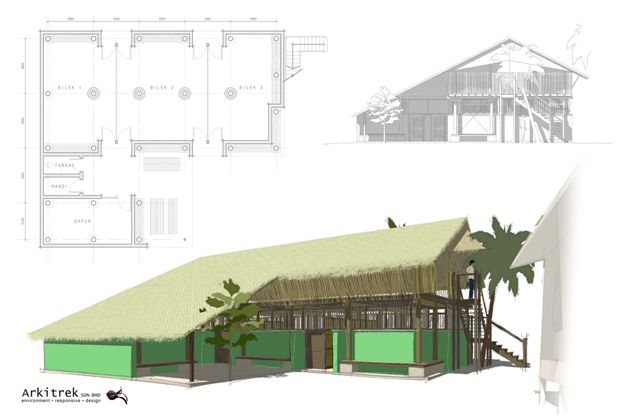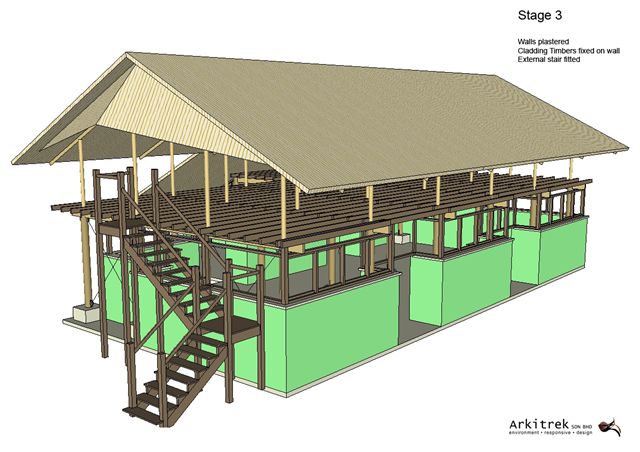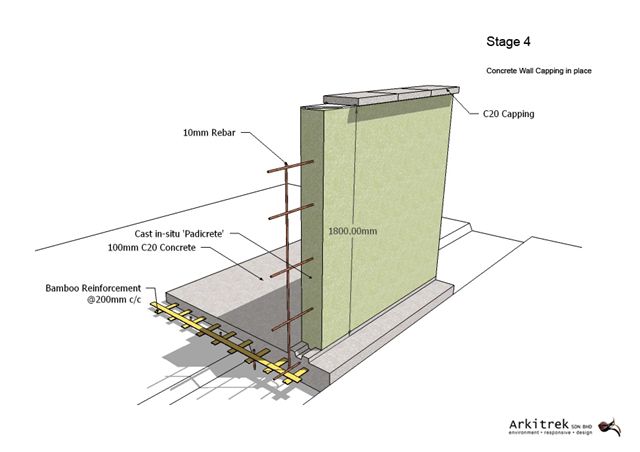Rungus on Top
This is our proposal for a community kindergarten at Kg Tinagol in the North of Sabah. It will be built by staff and volunteers from Camp Tinangol, a community tourism program operated by the locals with support from Camps International.
There are a number of innovations in the construction which respond to sustainable design questions.
Design by: Ian Hall, Eoghan Hoare and Oliver Wilson
All Images by Oliver Wilson
The community’s brief was for a three classroom kindergarten on the bottom and a community hall on the top. Our design response was to propose a first floor based on a traditional Rungus Longhouse and a ground floor using biocomposite concrete. Man, our project coordinator from Tinangol took great delight in this and confided to me with a snigger “Rungus di atas, style orang putih di bawah – lain daripada biasa” or; It makes a change to see Rungus on top!
Using biocomposite concrete – in this case mixing sand, cement, lime and rice husk – we reduce demand for cement and aggregate and create a building envelope with better thermal performance than the normal brick and concrete used in these parts. Rice husk is available in the village out the back from the communal rice thresher.
Coconut posts are also available locally and by using these for the ground floor structure we avoid using Ironwood which is the timber of choice but now locally extinct.
Replacing ironwood with coconut has it’s challenges because unlike ironwood, coconut will not last for 30 years. In fact we will be lucky to get 10 years and it should not be used at all for foundation stumps. Our reponse to this was to develop a concrete plinth to raise the coconut above the ground and attach the posts with steel brackets and triangulate them with steel cables.
Our design exposes all of the coconut posts so that their condition can be monitored throughout the building’s life. The bolted connections allow posts to be replaced as required.
All of the necessary construction techniques required to build this kindergarten are familiar to the locals – steel cables on the ubiquitous suspension bridges for example or homemade concrete blocks. Our challenge is to adapt existing technologies and materials which may have been overlooked by the weight of conventional wisdom.
Related posts
%RELATEDPOSTS%
















